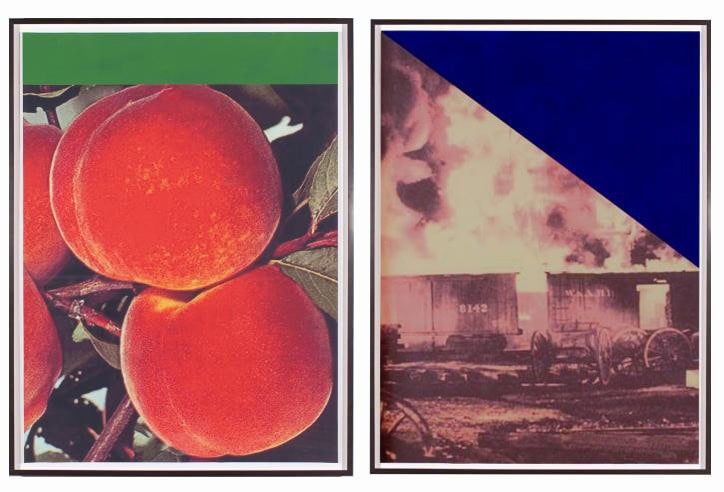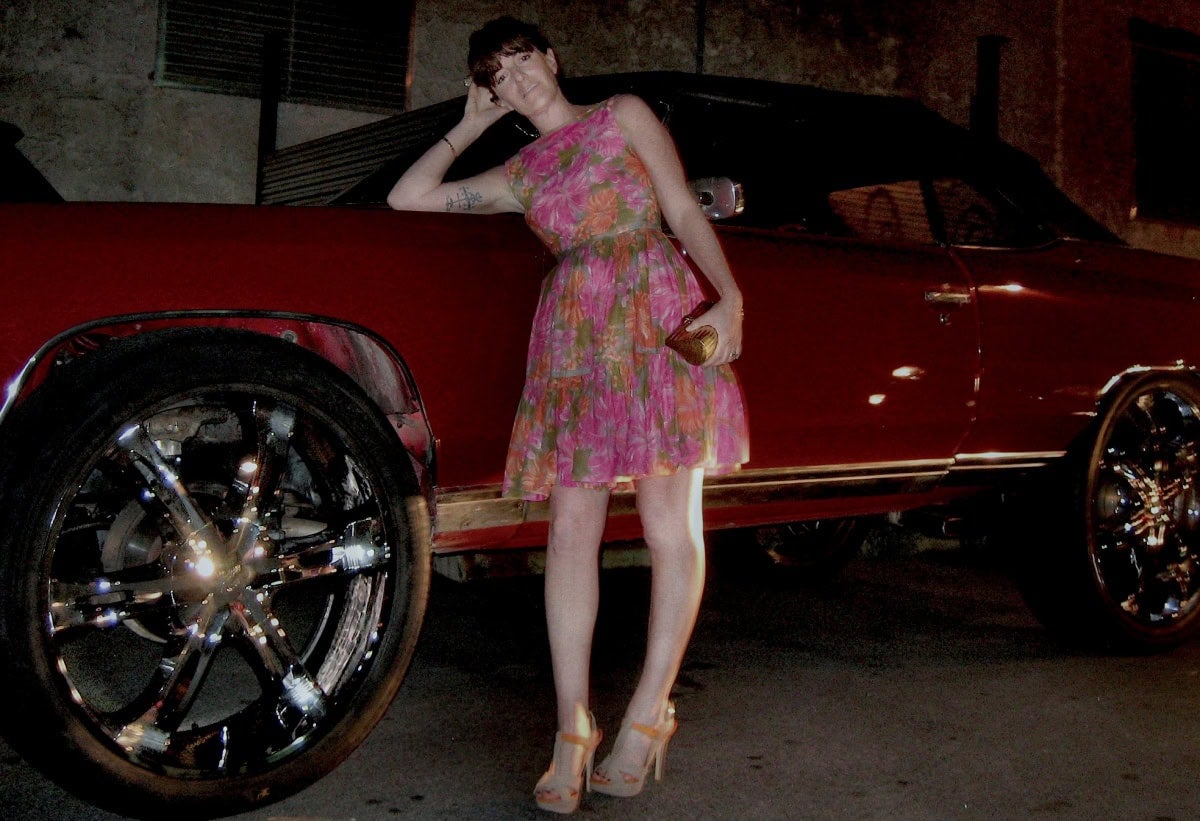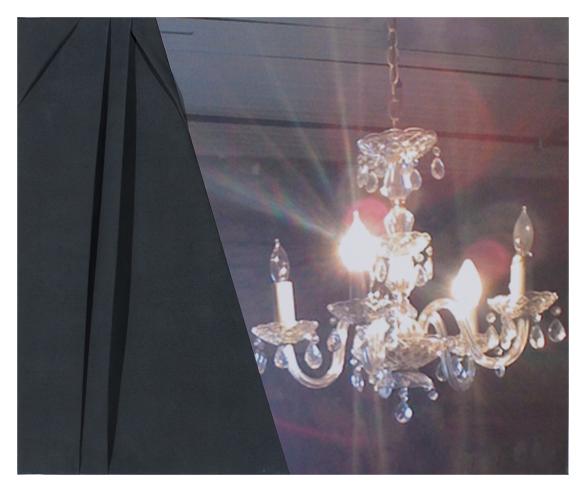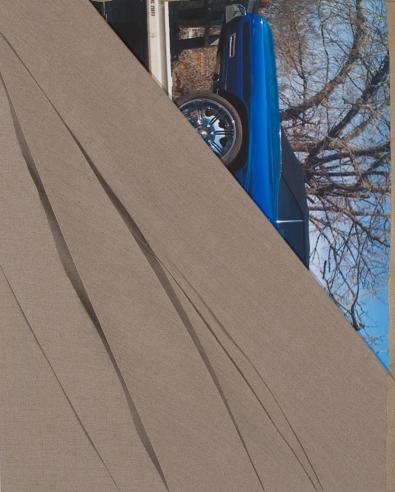
Carolyn Carr is a mid-career artist with deep roots in Atlanta. She lives in Castleberry Hill, but frequently travels for her career. She and her husband, artist Michael Gibson, host experimental art happenings locally at Garage Projects, which is literally a garage that opens onto Peters Street. She received her BFA from the Atlanta College of Art (with a focus on Photography). Her work has been shown in numerous solo and group exhibitions at museums and galleries including Gavlak (New York, Palm Beach), Artists Space (New York), 10 Chancery Lane (Hong Kong), National Museum of Women (Washington D.C.), the Contemporary, David Heath and Fay Gold (Atlanta). Recently she completed a site-specific Fluxprojects.org work entitled, Tomorrow is Another Day. In addition to her studio practice Carr is on a number of institutional boards as well as being an activist for local community and political organizations. An exhibition from her latest body of work is now showing at Jackson Fine Art until Saturday June 18.
KT: So, here we are in the back room of Jackson Fine Art.
CC: I call it the jewel box. I love this room, walking in and coming down the stairs into it. It’s environmental and intimate. In fact, the doorway splits the entrance: it can be shut entirely to make it a secret room.
KT: I’ll never forget seeing a Yamamoto Masao show here. . .all those tiny little photographs spread all over the room from floor to ceiling. It was totally a magical box.
CC: Beautiful!
KT: Unlike one’s home, white boxes are said to be erased of context, but I disagree. If you see a really terrific show in a particular space, that memory tends to linger the next time you come into that space.
CC: I like that Jackson Fine art is in a house. Even the approach with the green grass, the beautiful tree, and the peonies make it feel like you’re walking into someone’s home. It puts the white box into a different context.
KT: That makes me think of artists Elmwood and Dragset, who turned the Danish Pavilion at the Venice Biennial 2009 into a house for sale. Viewers lounged on furniture and walked through a formal dining room, while experiencing artworks hung in the home of the collector.
CC: Brilliant! . . .It’s like contemporary Ann Hamilton.
KT: Exhibitions like this play with the pretense of art for all. Let’s be real about who these pieces are being made for and who can really live with them on a regular basis. It’s a refined business; fine art is a high end product for the home.
CC: When I think of homes I think of privacy and intimacy. When I think of institutional spaces, that’s more exposed and public.
KT: I’m glad you mentioned that. Out of financial necessity and also in an effort to encourage art education, museums are embracing their role as a public space. This means that the large institutional spaces where ‘art’ is exhibited are designed for general non-art audiences. Under this condition a visitor must negotiate and be part of a big crowd. Gone are the days of museums being associated with that contemplative, space-viewing experience. This makes me interested to see how the role of gallery spaces will shift in response. If on one hand museums are for spectacle, lines and crowds, then it seems that there is a need for galleries to cater to the aesthetics of smaller crowds and art subcultures. Instead of catering to the populace, perhaps the gallery now becomes an especially precious respite from mass culture in the arts. They protect and provide an environment where informal conversations and practices can occur among people who want a deeper, less didactic, less guided art experience. Many people who follow fine art culture are looking for more than the entry level. Although they are also open to the public, galleries are for connoisseurs, who are free to take it a step further. This is a form of intimacy and that’s the feeling in this room.

CC: I worked very hard to design the first impression upon stepping down into my exhibition at Jackson Fine Art.
KT: You present a classic combo of Southern imagery: facing the viewer on the left are two giant fuzzy (very male) peaches, on the right is — I’m thinking — an appropriated image from the Civil War?
CC: It’s literally the burning of Atlanta taken from the movie Gone with the Wind. I tried to take advantage of the way the door divides the two images at the entrance.
KT: Oh, wow. So, that’s purposeful.
CC: Absolutely, they are sold as a pair. Atlanta has been so divided in terms of race. One of our biggest struggles has been coming together. Thus this is the dramatic introduction to the show.
KT: The imagery has been slashed with bold graphics — solid color, painted shapes. This is new for you?
CC: Yes.
KT: Previously you’ve been making abstract paintings, based on graffiti marks.
CC: “Writing,” yes.
KT: But, you’re not messaging anything literal, correct?
CC: Correct. It’s a contemporary hieroglyph, a tag I took off a train in Castleberry Hill. I’ve been using the same one since 2000. It’s a really good tag.
KT: Did you find out whose signature it is?
CC: No one from here, apparently. It’s just some random beautiful script.
KT: Are you finished using it?
CC: No. It’s just that this gallery focuses on pictures. I like to put the paintings in the mix. (I’m making an overall collage.)
KT: So, you use it all: painting, appropriated images, photos from your cell phone. . .and I love the pixelation.
CC: The first successful piece from this body of work was an image of the royal blue car, turned on its side. It was actually the least pixelated image. When I saw it, I had spent the day at The Frick Collection in New York looking at Impressionist paintings. I didn’t want to abandon the image [because it was poor quality in the traditional graphic sense]. . . then it occurred to me that allowing the pixelation was a way to bring painting back into photography, and I pushed it even further.
KT: The pixelation, the cloaking and slashing of the imagery, the use of cut and shaped canvases — all speaks to deterioration or fragmentation of memory and symbolism. You are not giving us whole images. You are cutting things, which is kind of violent and. . .
CC: Severe.
KT: It’s not a loose and friendly division. It’s sharp and designerly.
CC: This is where Modern art informs the work.
KT: That’s refreshing because so many artists who attempt to reference the South, tend toward old-timey objects and images. When I think of identity and the South, I too, think of history. We are haunted by our past because our official story is quite unsettled. Intense things happened here which we deny. There’s buried shame and embarrassment about atrocities, but we’re also still sore about being losers in the Civil War. We want to put it behind us and show a good face, but the ghosts are there.

CC: The chandelier is like that. It’s a generic historical motif — overused perhaps — which makes us think of the past and old Southern homes, but the rest of the imagery in this body of work tries to infuse modern images. I want to say, “yep, this is still a contemporary problem.” Like the double-stacked rims. That is as much about decay as the burning train.
KT: I find the mix of modern and old imagery kind of funny, actually.
CC: Yeah, it’s a good mix.
KT: I like the way the narrative is associative, like dream-speak or symbolic language. Look at the pieces you present: peaches, hip-hop cars, burning trains, the Greek Acropolis, a still from the Glass Menagerie by Tennessee Williams. These are images that communicate power and empire from different periods of time and from different cultural perspectives.
CC: People in Atlanta just love to throw up columns on every house.
KT: That’s Atlanta. We really reflect the spirit of colonization! The South is so Rome.
CC: The customizing of cars fits into that. It’s an art from a disempowered population. And it’s a way of making something as powerful as a car, one’s own. You can see amazing customized cars in Atlanta driving up and down the entire corridor of Peachtree Street.

KT: It’s certainly one of the perks of living here. But, why did you cover up most of the image of that vertical car . . . ?
CC: Why wrap it in linen like that? When I went to Atlanta College of Art I wanted to be a documentary photographer with an awareness of Anthropology. I learned that when the British sent photographers down to the continent of Africa they were given specific instructions on how to take photographs, but even with the best of intentions to be objective, a photograph never tells the whole story. You can’t get everything into the photograph.
KT: Yes. . .like when American photographers went West to document the American Indians who were about to disappear. They did not let the Indians photograph themselves. But even if they did, it would not tell a whole story. That’s something that is interesting about the prevalence of photography now and the publishing of images on the web. Everyone is a documentary photographer. In the near future, we are going to have a super plural view of the past, with so many images to sort through. And yet, still there will be plenty missing.
CC: That’s life, which is full of theater, which can ignore, hide, or reveal what’s behind the curtain.
Disclosure: Karen Tauches will serve as guest curator for an exhibition at Kiang Gallery in which Carolyn Carr is a participating artist. In pursuit of featuring work that contributes to important cultural discourse, as well as our commitment to transparency, our policy is to disclose instead of exclude.
Carolyn Carr’s collection of photographs will remain up at Jackson Fine Art through June 18, 2011.




